The Distinguished History of the UCSF Department of Radiology and Biomedical Imaging

It’s been a great honor to serve the Bay Area and beyond for more than 100 years. We look back on some of the most important moments that have shaped the UCSF Department of Radiology and Biomedical Medicine and the field of imaging as a whole.
1912 – The first dedicated X-ray facility at UC Hospital was opened. Additionally, 1912 marked the entry of radiology into the medical school curriculum. Fourth-year medical students received thirty-six hours of instruction in radiography (one hour weekly) for the year.
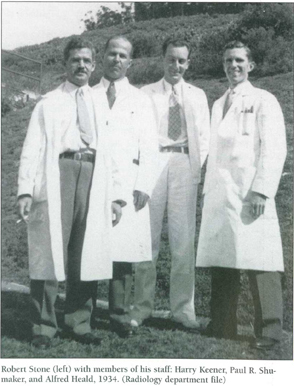 1915 – The UC annual announcement included information about the offering of a course on roentgenology by Howard E. Ruggles, MD, who would go on to become the first chief of radiology at UCSF.
1915 – The UC annual announcement included information about the offering of a course on roentgenology by Howard E. Ruggles, MD, who would go on to become the first chief of radiology at UCSF.
1917 – The University Hospital building located at 533 Parnassus was completed with the aid of $600,000 in donations from San Francisco citizens.
1928 – Robert Spencer Stone, MD, accepted an appointment to UC as the first full-time radiology faculty member and later became the division chief (currently known as chair of the department.) The Stone Library at the UCSF Department of Radiology and Biomedical Imaging is named after him. He left the department for a time to work on the Manhattan Project during World War II, but resumed his chairmanship upon his return.
1941 – Radiology at UCSF became a separate department, ending its hereditary reporting through the Department of Surgery.
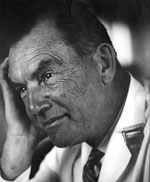 1940s – Dr. Earl R. Miller joined the faculty of the Department of Radiology at UCSF as an instructor and was board certified in radiology. He became a full professor in radiology, a position he held until his retirement in 1974. Dr. Miller served as chairman of the Department of Radiology from 1943 to 1945. From 1958 to 1974, he was the director of the Radiological Research Laboratory in the Department of Radiology. From the mid-1950s until 1974, Dr. Miller spent his mornings in clinical practice and teaching, while his afternoons were spent in clinical and laboratory research. His research included the introduction and use of angiography; the use of radioiodine; the development and use of X-ray diagnostic techniques incorporating sound; innovations in patient radiation exposure; and the study of error in radiologic interpretation. Today the Earl Miller Memorial Lecture is the annual named oration in abdominal imaging at UCSF.
1940s – Dr. Earl R. Miller joined the faculty of the Department of Radiology at UCSF as an instructor and was board certified in radiology. He became a full professor in radiology, a position he held until his retirement in 1974. Dr. Miller served as chairman of the Department of Radiology from 1943 to 1945. From 1958 to 1974, he was the director of the Radiological Research Laboratory in the Department of Radiology. From the mid-1950s until 1974, Dr. Miller spent his mornings in clinical practice and teaching, while his afternoons were spent in clinical and laboratory research. His research included the introduction and use of angiography; the use of radioiodine; the development and use of X-ray diagnostic techniques incorporating sound; innovations in patient radiation exposure; and the study of error in radiologic interpretation. Today the Earl Miller Memorial Lecture is the annual named oration in abdominal imaging at UCSF.
1950s – Dr. Robert S. Stone created a distinction between two types of radiology, diagnostic procedures and radiation treatment. However, all radiologists were trained in both of these branches of their specialty. A graduate of the department was expected to be proficient in performing all X-ray examinations and planning a course of cancer treatment. By 1959, the department roster had grown to 44 radiologists and scientists.
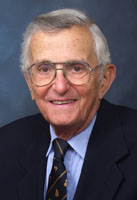
1963 – Alexander Margulis, MD, professor emeritus of the Department of Radiology, was named department chair, succeeding interim chair, Howard Steinbach, MD, namesake of the Howard Steinbach Memorial Lecture in the Distinguished Lecture Series. Dr. Margulis, who is also honored with a named lecture, would serve as chair for 26 years until his retirement in 1989. In 2013, Dr. Margulis was appointed to the rank of chevalier of the French Legion of Honor by the president of France for educating most of the present leaders of French radiology during his years at UCSF.

1970s – Several UCSF physicists made noteworthy improvements in the speed of CT. These were developed at colleague organizations.
1975 – Following its success in proving the usefulness of CT scanning, the UCSF Department of Radiology funded a small startup research and development operation involving engineers and physicists charged with the task of developing nuclear magnetic resonance (NMR, later named MRI by Dr. Margulis) as a viable imaging instrument for soft tissues in the human body.

1980s – The first open fetal surgery was performed at UCSF in 1981 by surgeon Michael Harrison, MD, and radiologist Roy Filly, MD. In this surgery, a vesicostomy was placed in a fetus with a urinary obstruction using ultrasound guidance. The UCSF Fetal Treatment Center, the first fetal treatment center in the United States, was co-founded by Drs. Filly and Harrison in the early 1980s and is now entering its fourth decade.
1983 – After eight years of research, NMR (later named MRI by Dr. Margulis) proved it could produce clear, dramatic images. The technique was featured at RSNA in 1983 and the UCSF team obtained FDA pre-market approval for the device.
1992 – Ronald L. Arenson, MD, Alexander R. Margulis Distinguished Professor, began serving as chair of the department in 1992, a position he held until 2017. Dr. Arenson has served as president of the Radiological Society of North America, the Association of University Radiologists, the Society of Chairmen of Academic Radiology Departments, the board of the GE-Radiology Research Academic Fellowship, and the Academy of Radiology Research.
2000s – The UCSF Mission Bay campus opened and became home to a vibrant community of scientists, scholars, students, and staff. Byers Hall opened in 2005 and is home to the Margaret Hart Surbeck Laboratory directed by Dr. Sarah Nelson. The mission of the Surbeck Laboratory is to create an optimal environment for cutting-edge imaging research and education, contributing to translational science at UCSF across departments, campuses, and affiliated institutions.
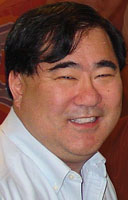 2000 – The distinguished UCSF research career of Bruce Hasegawa, PhD, is highlighted by his pioneering work combining SPECT functional imaging with CT anatomical imaging to produce the first combined dual-modality imaging system, SPECT/CT. The annual Bruce Hasegawa Memorial Lecture honors his pioneering research accomplishments, his ability to educate and inspire those he taught and mentored, and his generosity towards others.
2000 – The distinguished UCSF research career of Bruce Hasegawa, PhD, is highlighted by his pioneering work combining SPECT functional imaging with CT anatomical imaging to produce the first combined dual-modality imaging system, SPECT/CT. The annual Bruce Hasegawa Memorial Lecture honors his pioneering research accomplishments, his ability to educate and inspire those he taught and mentored, and his generosity towards others.
2007 – Breast MRI, an imaging technique that was developed at UCSF, became reimbursable by Medicare, broadening its use and availability. In addition to the development of the technique, UCSF was the first institution in Northern California to install a large bore 3.0 T Siemens Verio MRI scanner.
2008 - To recognize, in the words of Dr. Arenson, the “intellectual vitality and breadth” of its PhD researchers, the name of the department was changed to the Department of Radiology and Biomedical Imaging.
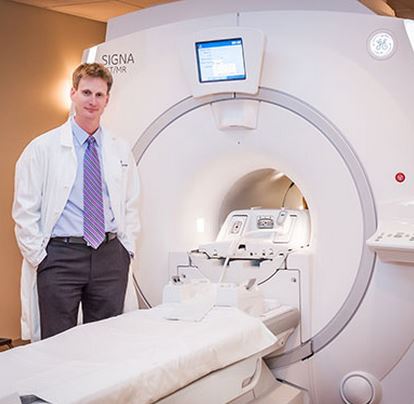
2010 - UCSF became the first site in the country to be awarded a high-end instrumentation grant from the NIH for the purchase of MR-guided focused ultrasound surgery (MRg- FUS). This cutting-edge therapeutic technology would be named one of the best inventions of 2011 by Time Magazine.
2014 – UCSF became certified as Northern California’s only facility specialized in the diagnosis and treatment of the genetic disorder hereditary hemorrhagic telangiectasia (HHT). Currently, both UCSD and UCLA have centers, but UCSF remains the only certified HHT center.
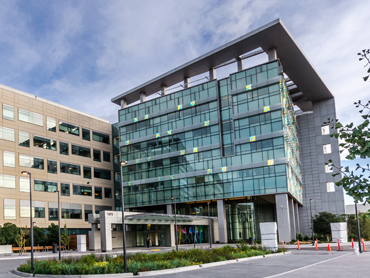
2015 – For the first time in the United States, full-body and simultaneous time-of-flight PET/MRI became available to patients at UCSF. Simultaneous acquisition allows for the precise co-registration of physiologic PET with morphologic MRI images. This state-of-the-art dual-imaging technology reduces radiation, enhances image quality, and is safer and more convenient for patients.
2015 – The new UCSF Mission Bay Hospitals, comprised of UCSF Benioff Children’s Hospital, UCSF Betty Irene Moore Women’s Hospital, and UCSF Bakar Cancer Hospital, opened in February 2015. The Department of Radiology and Biomedical Imaging opened UCSF Imaging Center at Montgomery Street, a small personalized site featuring screening mammography, bone densitometry (DXA/DEXA), and ultrasound.
